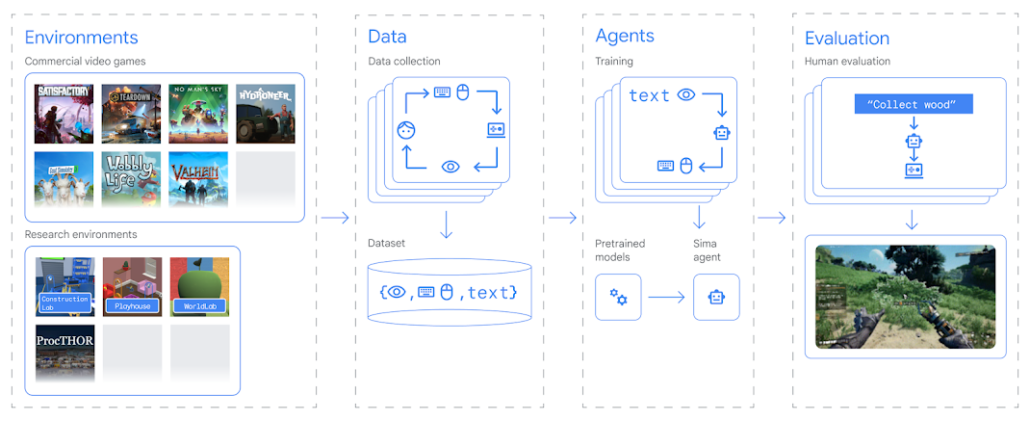SIMA Framework: The Four Pillars
The architecture of SIMA is built around a systematic pipeline, ensuring seamless integration across different environments and efficient agent training. The four critical stages are:
1. Environments
SIMA operates across a mix of commercial video games and research environments. Examples of commercial games include Satisfactory, Teardown, No Man’s Sky, Valheim, and others, offering diverse gameplay scenarios. On the research front, tools like Construction Lab, Playhouse, and WorldLab provide controlled settings for agent development and testing.
This dual approach ensures that SIMA Framework is trained in both real-world gaming environments and experimental setups designed to test its adaptability and robustness.
2. Data
SIMA relies on vast amounts of player interaction data collected during gameplay. This includes:
- Player Actions: Mouse clicks, keyboard inputs, and controller interactions.
- Observations: Agent perception of the virtual environment, such as object detection and spatial awareness.
- Textual Instructions: Natural language commands provided by players or developers.
The collected data is aggregated into a rich dataset comprising multimodal inputs like {object, action, text}, ensuring a holistic training foundation for the agent.
3. Agents
Using the dataset, SIMA employs advanced machine learning models to train intelligent agents capable of operating across multiple game worlds. Key steps in this process include:
- Pre-trained Models: Leveraging existing AI frameworks to accelerate training.
- Instructable Agents: Enabling agents to learn tasks dynamically through textual instructions and observed player actions.
This results in agents that are not only skilled but also scalable and adaptable to varied virtual environments.
4. Evaluation
The final stage involves rigorous human evaluation of the trained agents. A simple instruction like “Collect wood” is used to test the agent’s ability to:
- Interpret the command.
- Execute tasks effectively in a game world.
- Adapt dynamically to changing scenarios.
This ensures that the agents are capable of delivering practical, real-world performance in live gaming scenarios.






